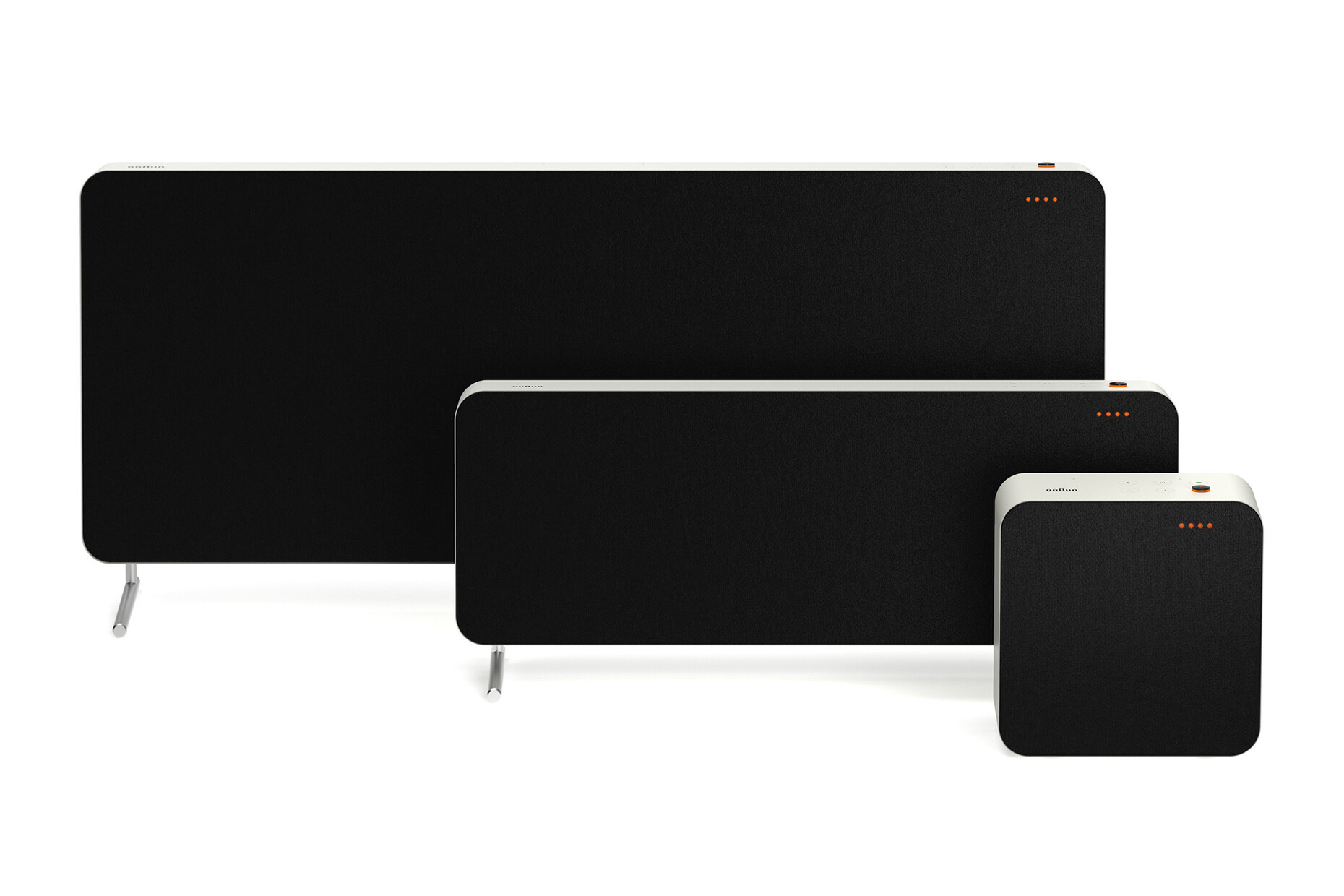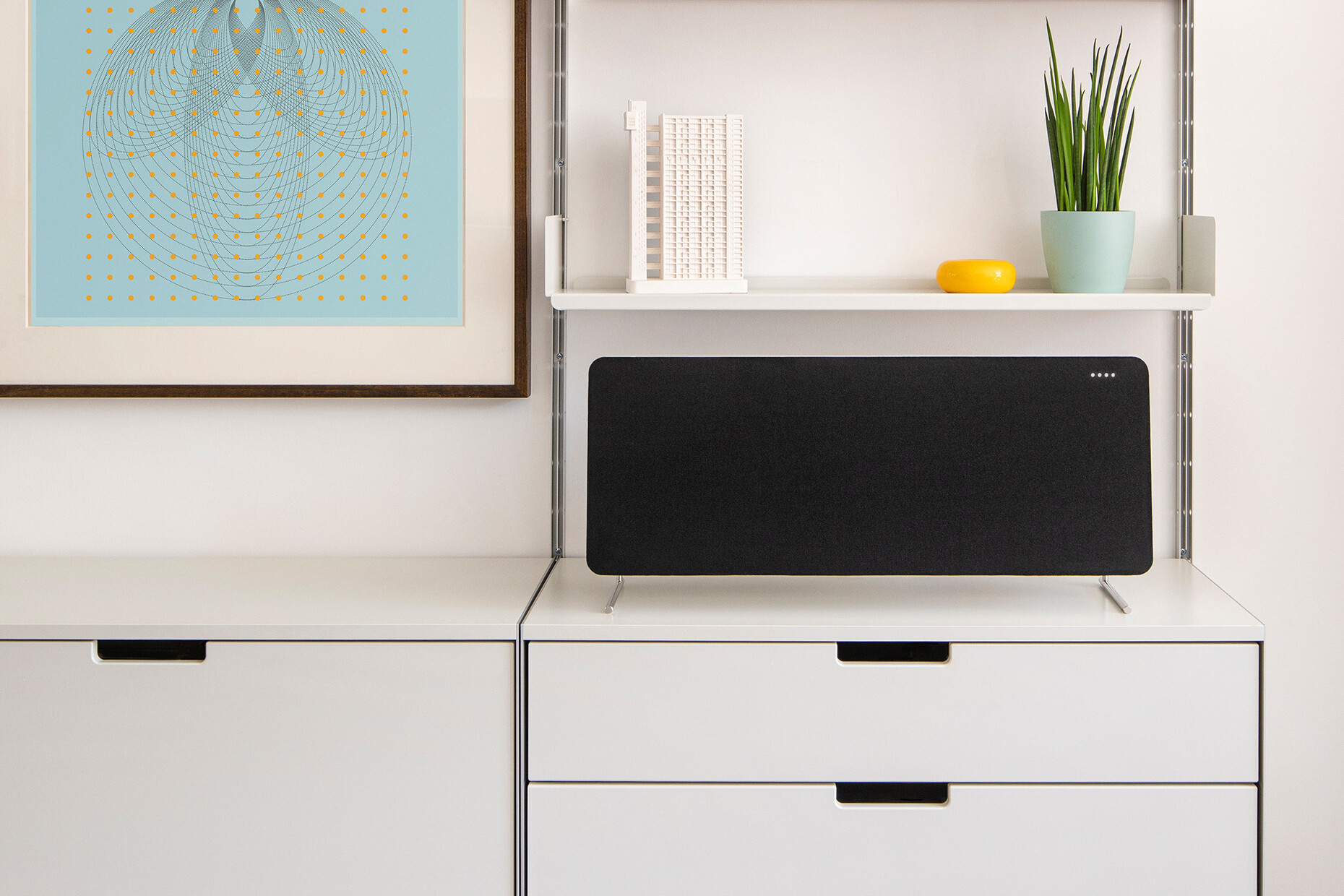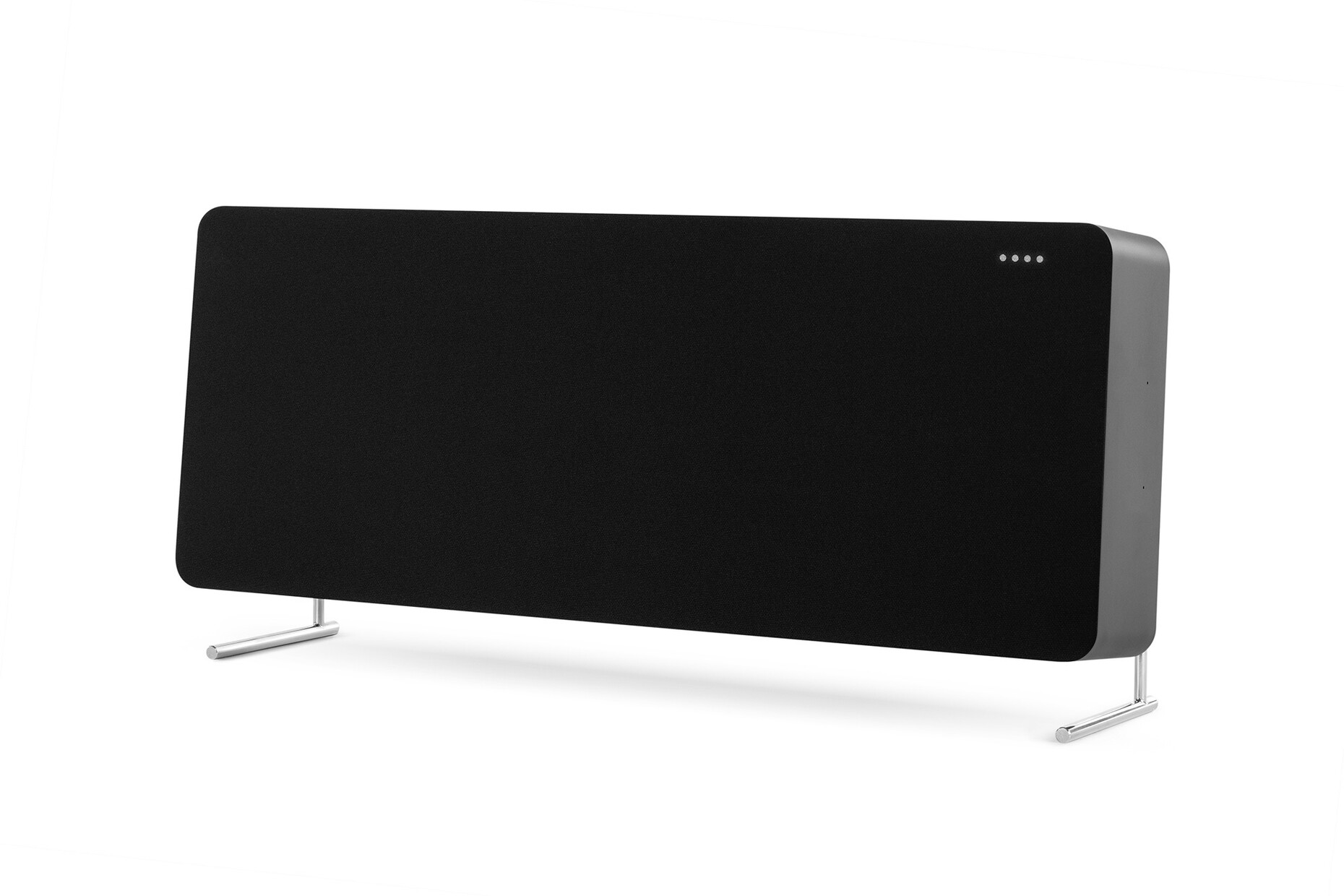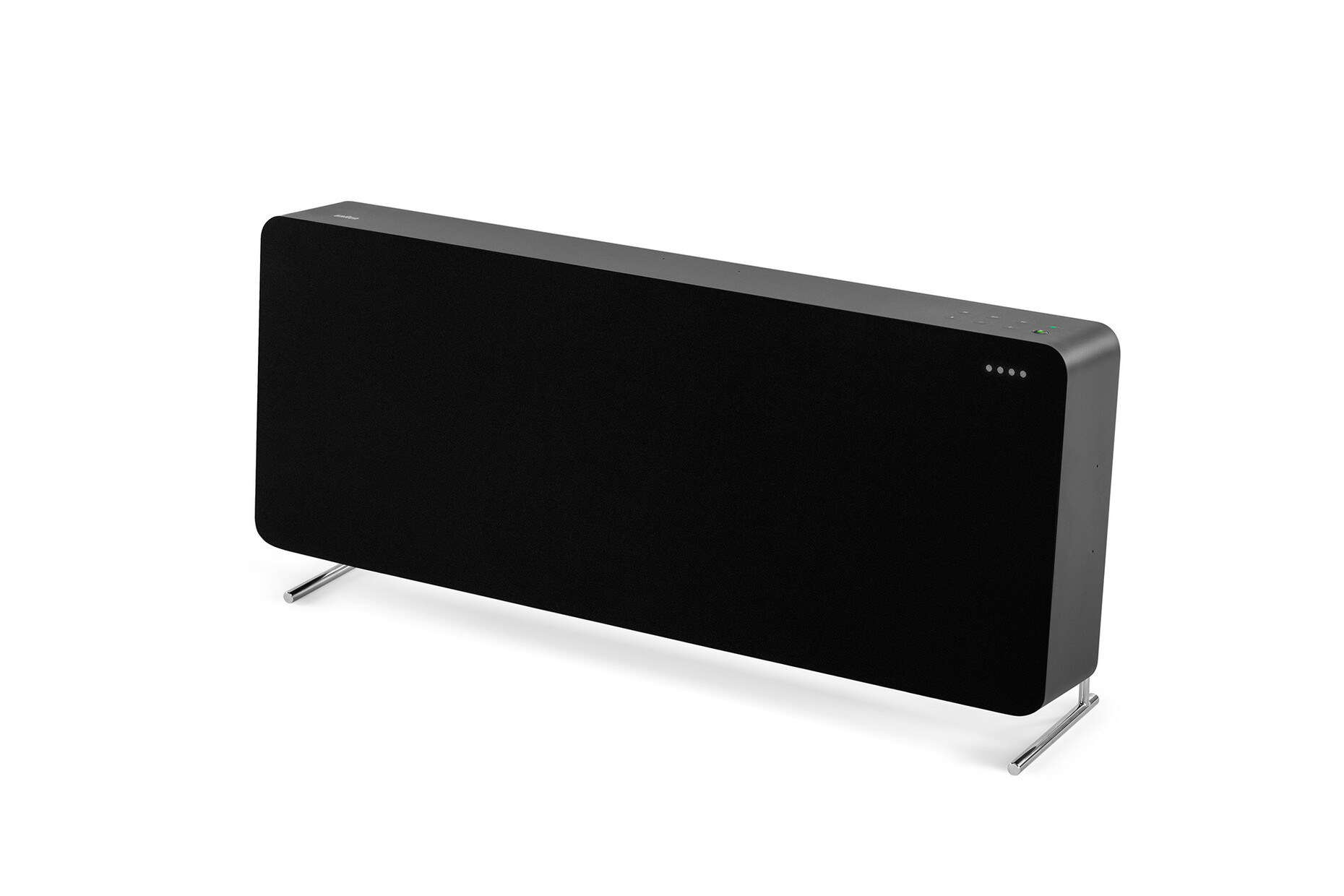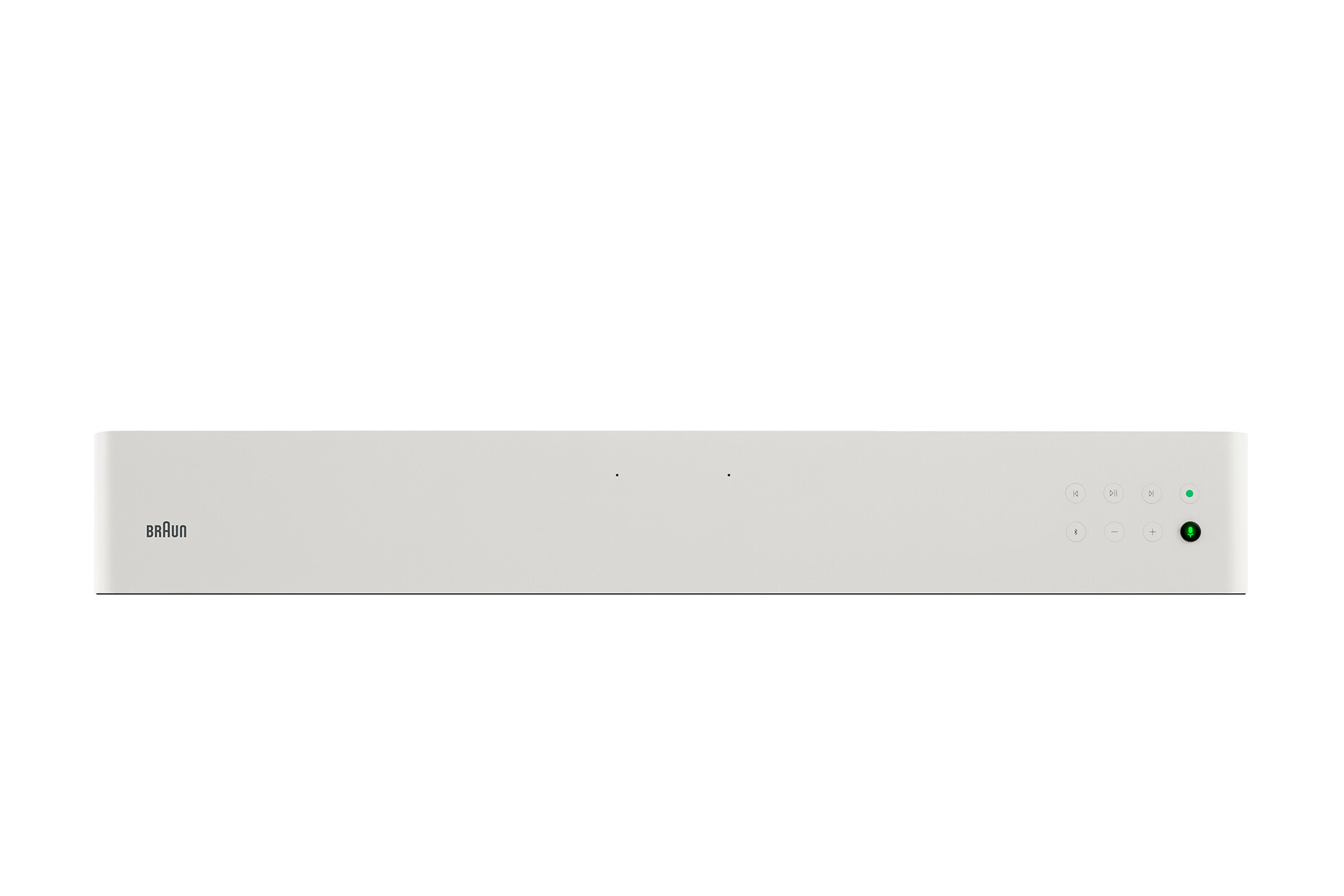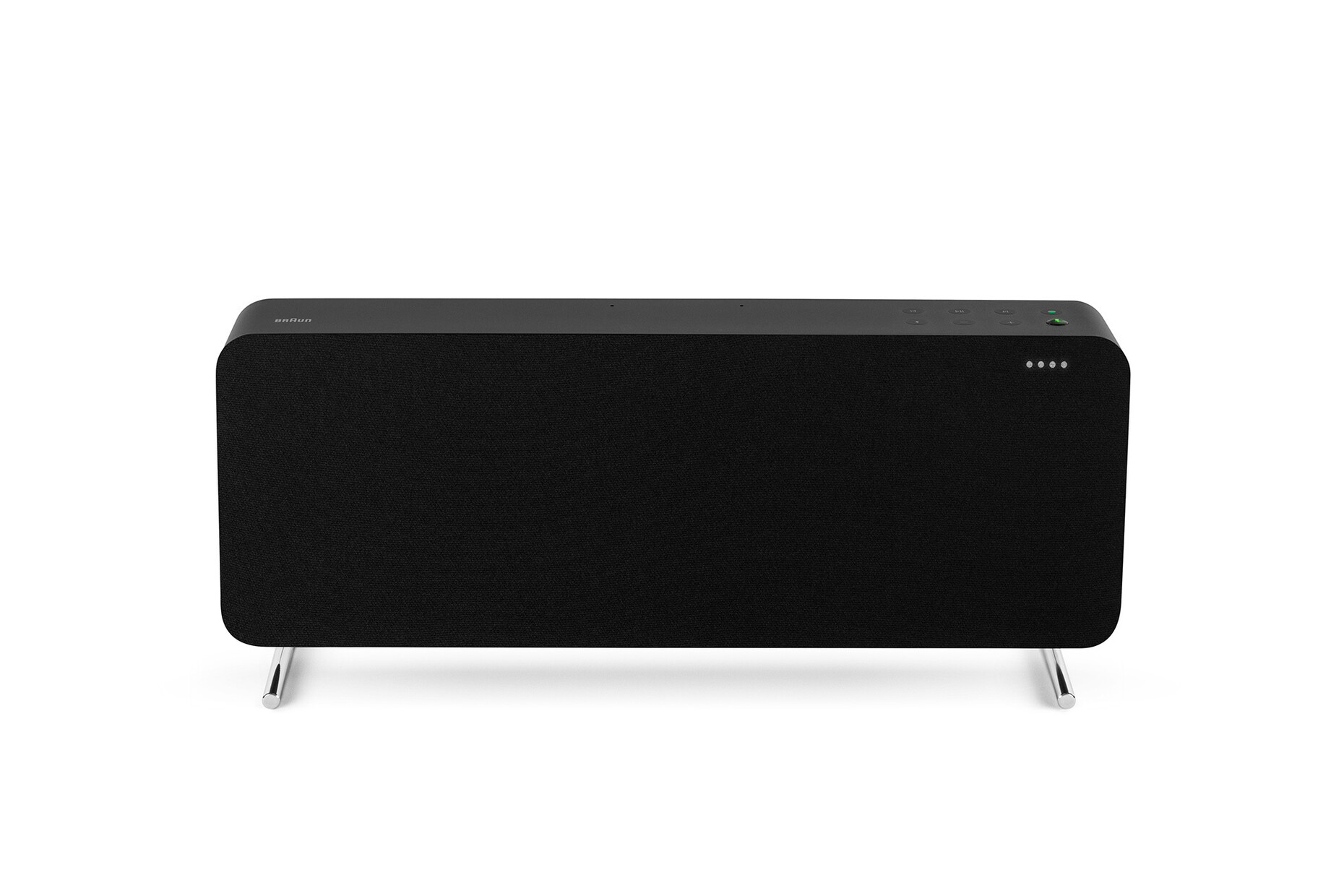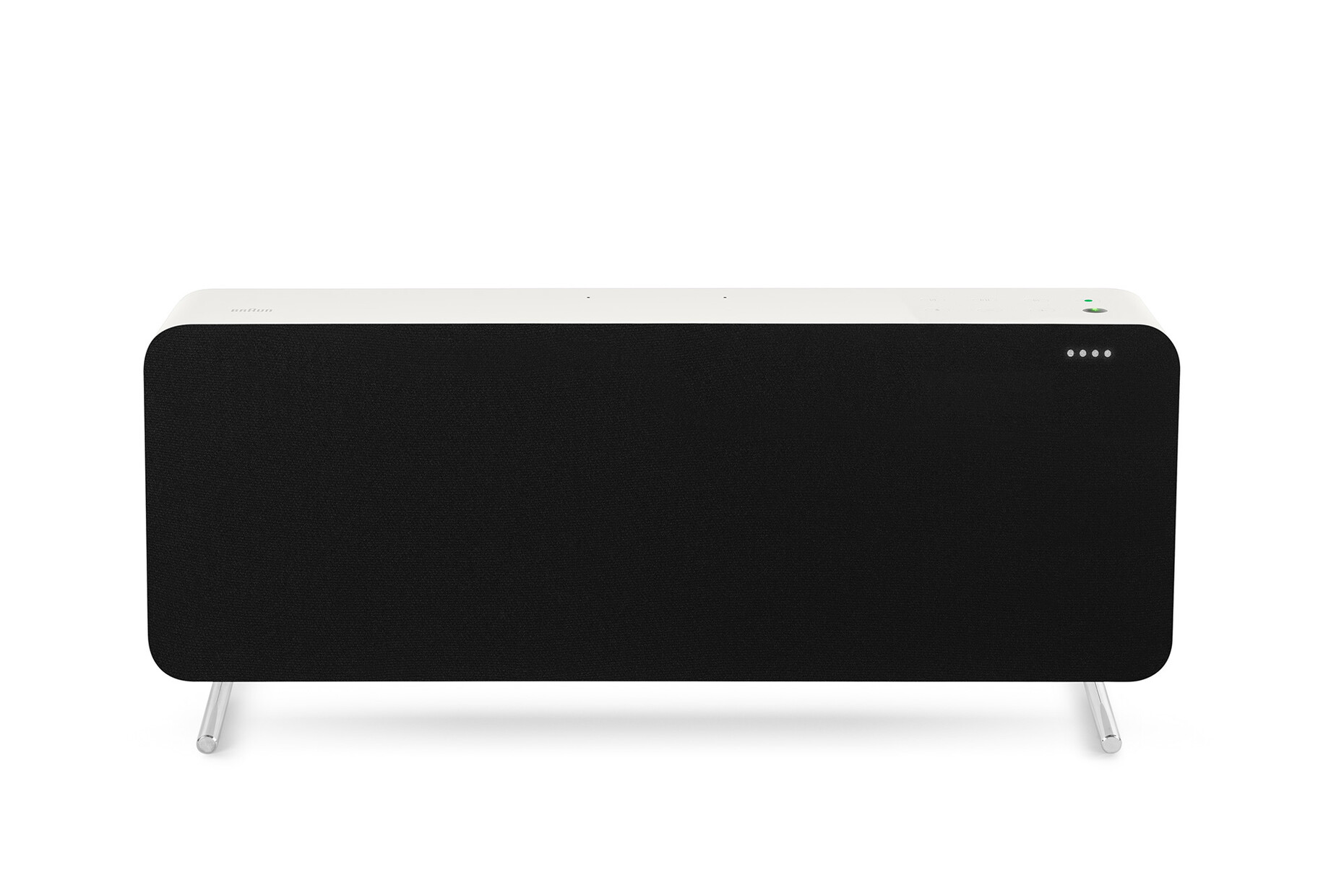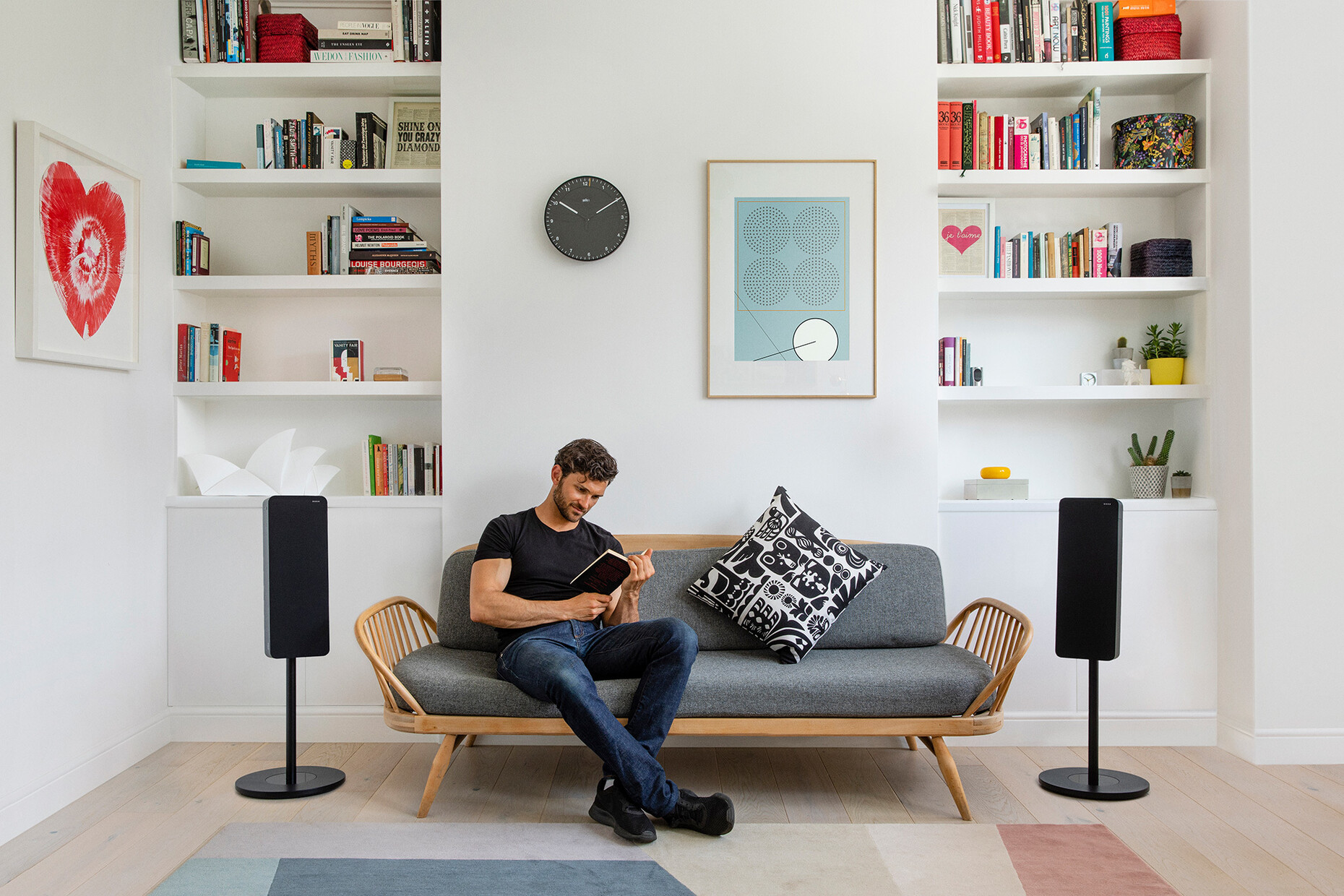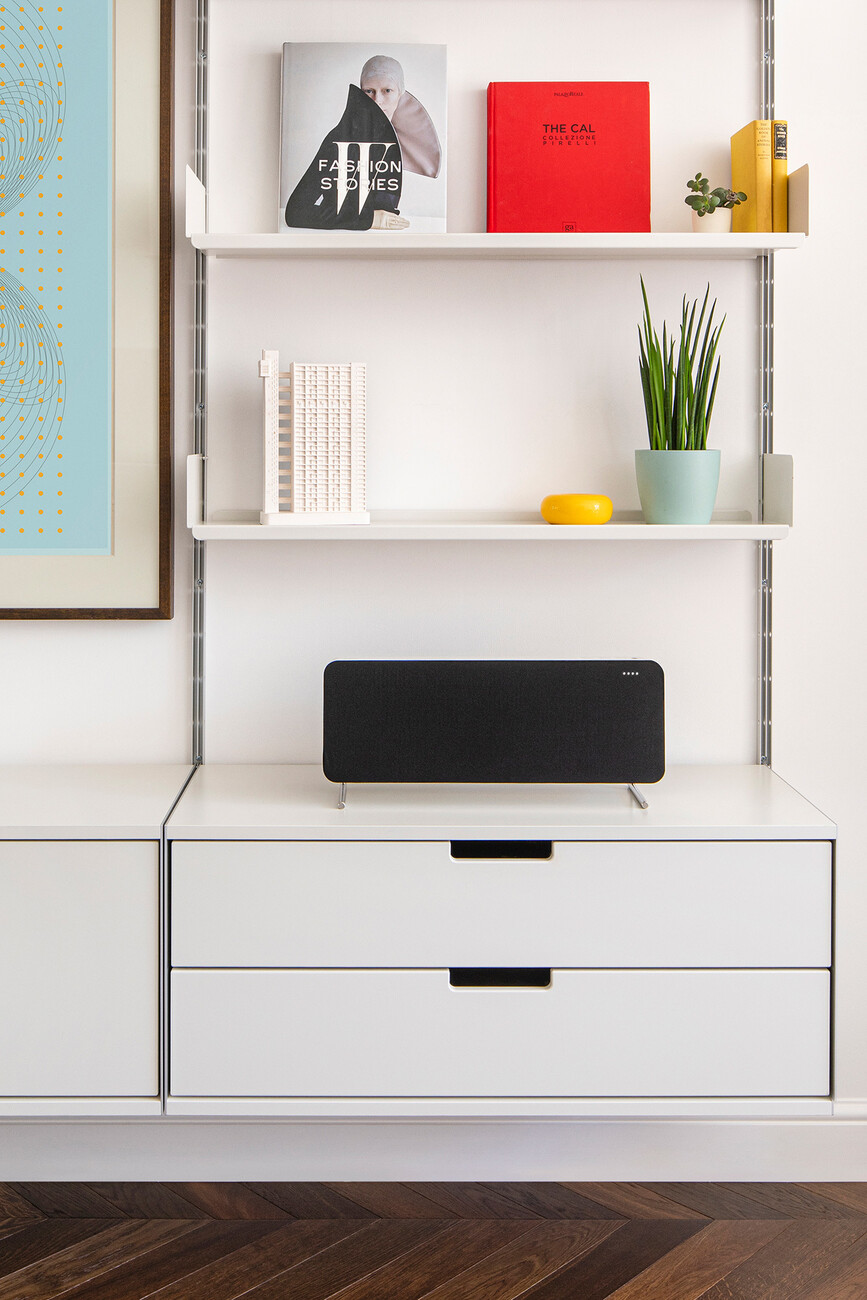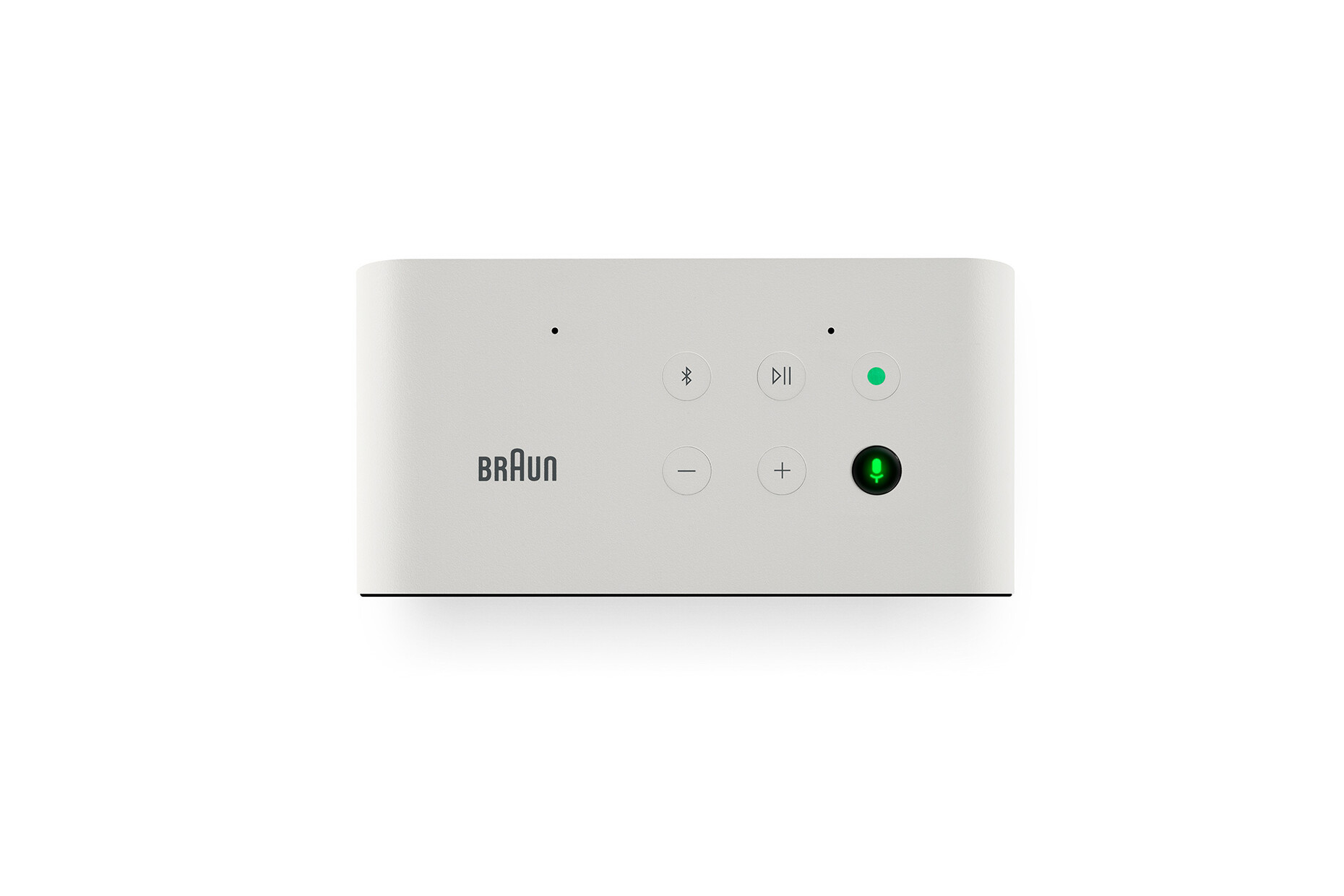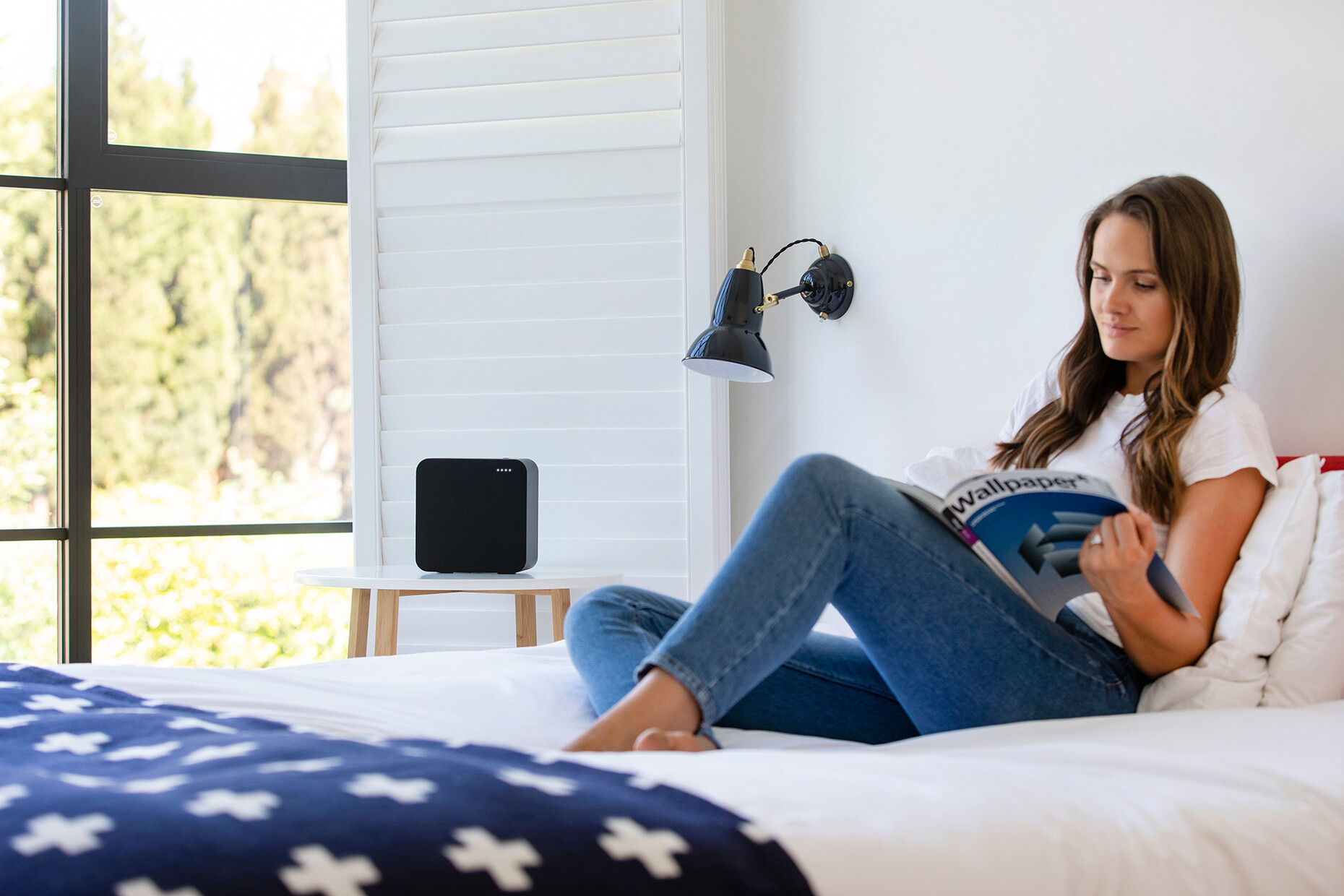Delicious torture
At the end of the day, the task faced by the design team at Braun was something that is generally known as “thankless” – they needed to design a product where there was not a great deal to be designed. Another major headache was the almost overwhelming burden of the company’s glorious past – the time in which Braun design, under the aegis of Dieter Rams, revolutionized product design. And accordingly, explains Braun’s head design honcho, Oliver Grabes, the entire team was dying to be the one to be allowed design Braun’s first audio product for 28 years.
Practically nothing produced by this Kronberg-based electronics manufacturer is as closely linked to the aesthetic vocabulary of Braun design as entertainment electronics. Rams, Hans Gugelot, and a number of others designed enchantingly simple electric appliances which (decades before the iPhone) became objects of desire for an entire generation. However, in 1990 Braun withdrew from the TV and stereo system markets. The supremacy of the Asians had become too overwhelming, too few consumers were prepared to fork out the price of a small car for a “designer” stereo system. From then on, the brand, which was now owned by Procter & Gamble, focused mainly on the business of electric razors and other small electronic appliances of the kind that are used in bathrooms and for personal care.
In the latter market, where price is far more important than design, much of Braun’s design identity was forgotten. As of 2009, Grabes started attempting to regain some of that legacy. One of the first rays of hope came with Braun Clocks, a company for which Procter & Gamble had licensed the designs and trademark rights to Zeon, a British company which had not only reissued a number of old designs but had also developed ambitious new ones in the tradition of Braun’s original stylistic idiom. Grabes and the Braun management had already had something similar in mind for their audio products for a long time. Eventually, a suitable partner was found in Pure, another British company – and a DAB specialist. There followed what was, as Grabes puts it, “a very intensive year”, the end of which saw the launch of the new loudspeaker range LE.
Fortunately, Grabes and his team have decided against an explicitly retro design and have restricted themselves to a few references to the history of the Braun design – such as the loudspeakers’ optional metal “feet”, which quote the first LE loudspeakers dating back to 1959. Or the round buttons on top of the equipment whose shape and graphic design unmistakably speak the Braun “language”. This was one of the limited opportunities for reintroducing elements that are unmistakably Braun. “Nowadays, Braun design applies to just about everything,” is how Grabes describes his design team’s dilemma. After all, with the success of the iPod, IPhone and iPad at the latest, for whose design Apple’s head designer Jonathan Ive explicitly took his lead from Rams, Braun’s stylistic vocabulary has once again become the guiding principle behind almost all the manufacturers of entertainment electronics. “We have attempted to find elements which other companies cannot use because they are too strongly identified with Braun,” explains Grabes. And it is, not least, the striking Braun wordmark and its placement that indicate the products’ manufacturer at a glance.
Incidentally, as Grabes describes the design process, it has always been the case at Braun that the designers have taken their lead from function and technical specifications and have then simply clad them in good industrial design. Accordingly, as he goes on to explain, something known as BMR (balanced mode radiators) technology makes it possible to construct very flat housing without any loss of sound quality. And in all three models, this housing consists of an anodized aluminum frame, while the fronts of the appliances have a textile covering. The designers devised this covering with a kind of miter of the kind used in furniture construction, meaning that almost no seam is visible between the frame and the cover. Such details underscore Braun’s aspiration for the future – to play in the same league as Bang & Olufsen. In terms of price the new loudspeakers are also aimed at the latter market segment.
And what did Rams himself have to say about the new audio products? “He was very interested in the project,” reports Grabes. “And with that vast fund of knowledge from his time at Braun he opened our eyes to a great number of things – even though of course he steered completely clear of the design work itself.” Incidentally, Grabes’ and his team’s professional interest in this grand old man’s icons continues apace – with the next new Braun audio products already in the pipeline.
